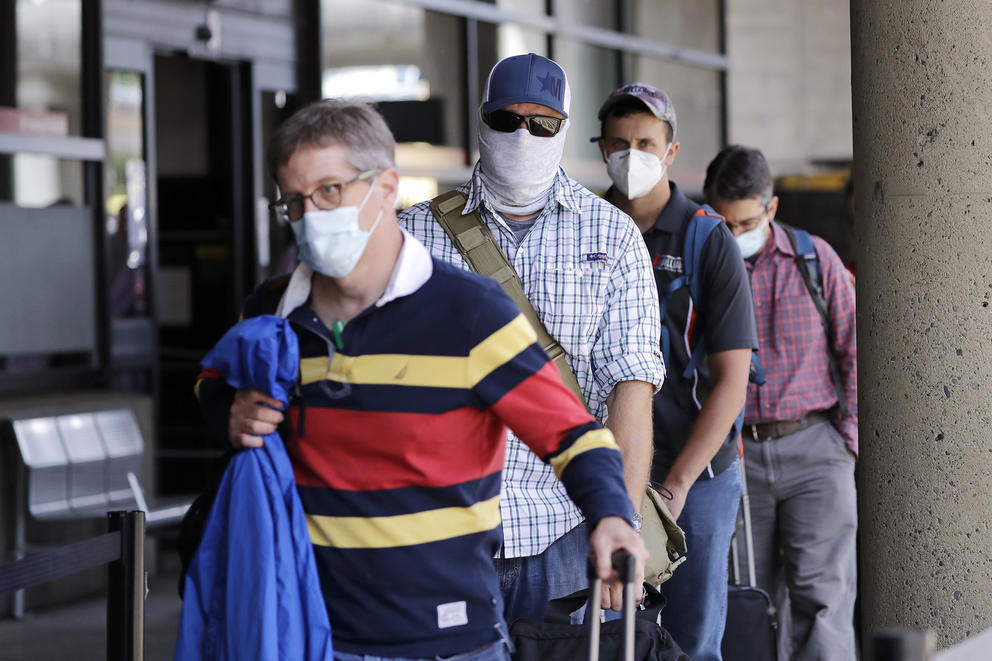Coronavirus has changed our reality for the foreseeable future, prompting questions from you about how to navigate our strange new normal. In this weekly column, we hope to answer them with practical advice, ideas and solutions. Ask your question at the bottom of this story.
Question: How do we know when it is truly safe to fly when you have underlying conditions? Which airline is the safest? Is it safer to fly nonstop? Safer in first class?
If you ask me, travel by aeroplane peaked in the early ’60s and has endured a steady erosion in glamour ever since. Once upon a time you could lounge on a top bunk in your finest cravat while waiting for a nattily dressed, private garçon to pop by with a light for your Dunhill and a complimentary refill of sweet vermouth. Now it’s more like a CAFO simulator, where no one actually gets the cattle gun, however much you might wish for it (but no one gets fed for free, either).
And that was before the pandemic.
When it comes to the coronavirus, all travel bears some risk — and flying is one of the riskier ways to move about the country. The reasons are mostly obvious: Both airports and airplanes tend to concentrate crowds of people into closed, indoor areas that could support disease transmission.
A reader also asked: If the U.S. is beyond contact tracing, how can we contain COVID-19?
Airlines and airports are taking some measures to make flying safe, or at least make passengers feel safer; many require face masks for staff and passengers, some are implementing physical distancing during boarding or at baggage claim, and most are following rigorous cleaning procedures. Some airlines refuse to sell middle seats, and some airports are instituting temperature checks.
But these measures are often inconsistently applied, and airlines like United and American are back to booking full flights. As asymptomatic or presymptomatic transmission seems to play a bigger part in the spread of the virus, many of these countermeasures are of limited utility. Most planes feature high-powered HEPA filters that should scrub all microbes from cabin air, but there’s no proof that that will fully protect passengers from viral transmission (despite industry assurances it will).
Still, some people will need to travel by air. But the uncertainties of COVID-19 and the potential viral soup a packed plane presents mean that before boarding a plane, we must lean into every risk assessment tool we have.
When will it be “truly safe to fly”? Not until we have a vaccine. If you have underlying conditions that exacerbate COVID-19’s potentially lethal symptoms, it’s best to avoid flying unless absolutely necessary. If you must fly, absolutely plan to wear a mask for the entire trip, if possible. Ask a prospective airline about its cleaning procedures, and bring your own supplies to sanitize your area. Opt for an airline that doesn’t sell middle seats, like Alaska, Delta, JetBlue or Southwest; if you can, try and position yourself in a window seat with empty seats behind and in front of you (admittedly a pretty tall order).
First-class seating offers more space, so it could be safer; buying up an entire row or — heck — the entire first-class cabin would be even safer than that, if you’re Spendy McMoneybags. Any choice that limits interactions with crowds is a wise one. That includes shorter flights, nonstop flights, quieter airports and destinations with lower population densities.
If this all sounds nerve-wracking, good: Pay attention to those bristling nerves while investigating what options an airline carrier offers and whether your trip is even worth the risk. Err on the side of caution and, above all, remember to bring your own sweet vermouth to take the edge off (but seriously, don’t do this; it’s illegal).



